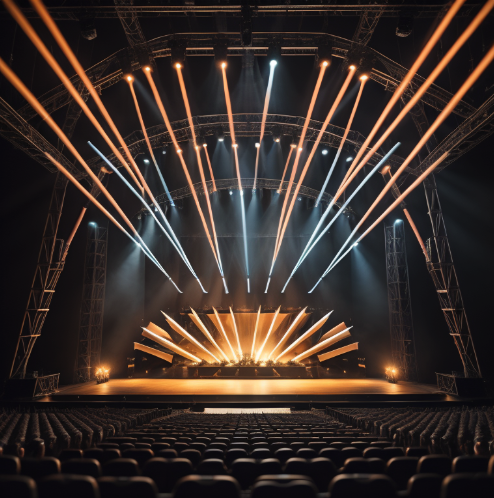LIGHTS SOUND and STAGING

Staging, lighting, and audio are crucial elements of any conference or event meeting because they collectively create an immersive and impactful experience for attendees. These elements go beyond mere technicalities; they shape the atmosphere, engagement level, and overall effectiveness of the event. Here’s why staging, lighting, and audio are so important:
- Setting the Mood and Atmosphere: Proper staging, lighting, and audio design help set the desired mood and atmosphere for your event. Whether it’s a formal business conference, an industry summit, or a product launch, these elements work together to evoke the right emotions and create a suitable ambiance.
- Audience Engagement: High-quality staging, lighting, and audio systems keep attendees engaged and attentive. Clear sound and effective lighting enhance the visibility of speakers, presentations, and visual content, ensuring that participants can fully absorb the information being presented.
- Visual Impact: Creative staging designs and dynamic lighting can turn a simple conference space into an aesthetically pleasing environment. Engaging visuals capture attendees’ attention, making the event more memorable and contributing to a positive overall experience.
- Effective Communication: Quality audio systems ensure that speakers’ voices are clear and easily audible throughout the venue. This is essential for effective communication, especially in large spaces or when dealing with language barriers. Poor audio can lead to misunderstandings and disengagement.
- Accessibility and Inclusivity: Effective audio systems, along with visual cues provided by lighting and staging, contribute to the accessibility of the event. All attendees, including those with hearing impairments or visual sensitivities, should be able to participate and enjoy the event.
- Brand Representation: Staging, lighting, and audio can be customized to reflect your brand’s identity and values. Your event’s visual and auditory aspects can reinforce your brand image and leave a lasting impression on attendees.
- Smooth Flow and Transitions: Well-designed staging and lighting facilitate smooth transitions between different segments of the event, such as keynote presentations, panel discussions, and breakout sessions. Effective lighting cues help guide attendees’ attention and create a seamless flow.
- Virtual and Hybrid Events: With the rise of virtual and hybrid events, staging, lighting, and audio are even more critical. These elements ensure that remote attendees have a high-quality viewing and listening experience, which is essential for engagement and interaction.
- Enhanced Entertainment and Performances: If your event features entertainment or performances, staging, lighting, and audio can greatly enhance the impact of these elements. Proper lighting design can create dramatic effects, while quality audio ensures that performances are enjoyed to the fullest.
- Overall Event Perception: The attention to detail in staging, lighting, and audio reflects the overall professionalism and investment in the event. High-quality production values contribute to a positive perception of the event’s organization and its importance.
In summary, staging, lighting, and audio are vital components of a successful conference or event meeting. They influence the event’s atmosphere, engagement, communication effectiveness, and overall attendee experience. Investing in these elements contributes to a memorable and impactful event that leaves a positive impression on attendees and achieves your event’s objectives.
